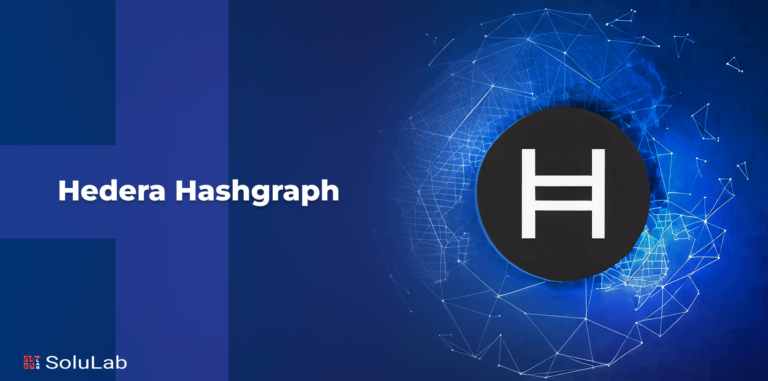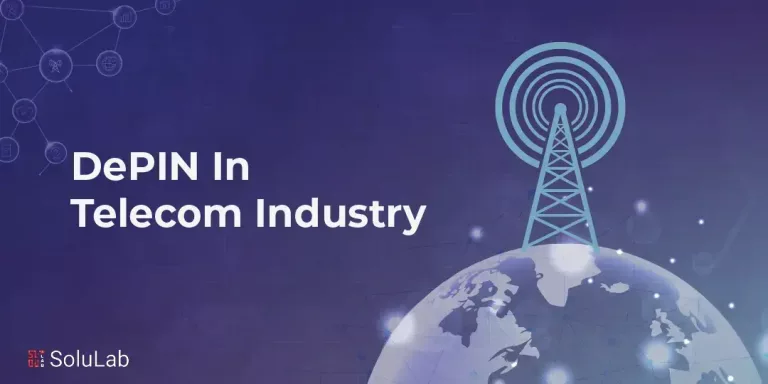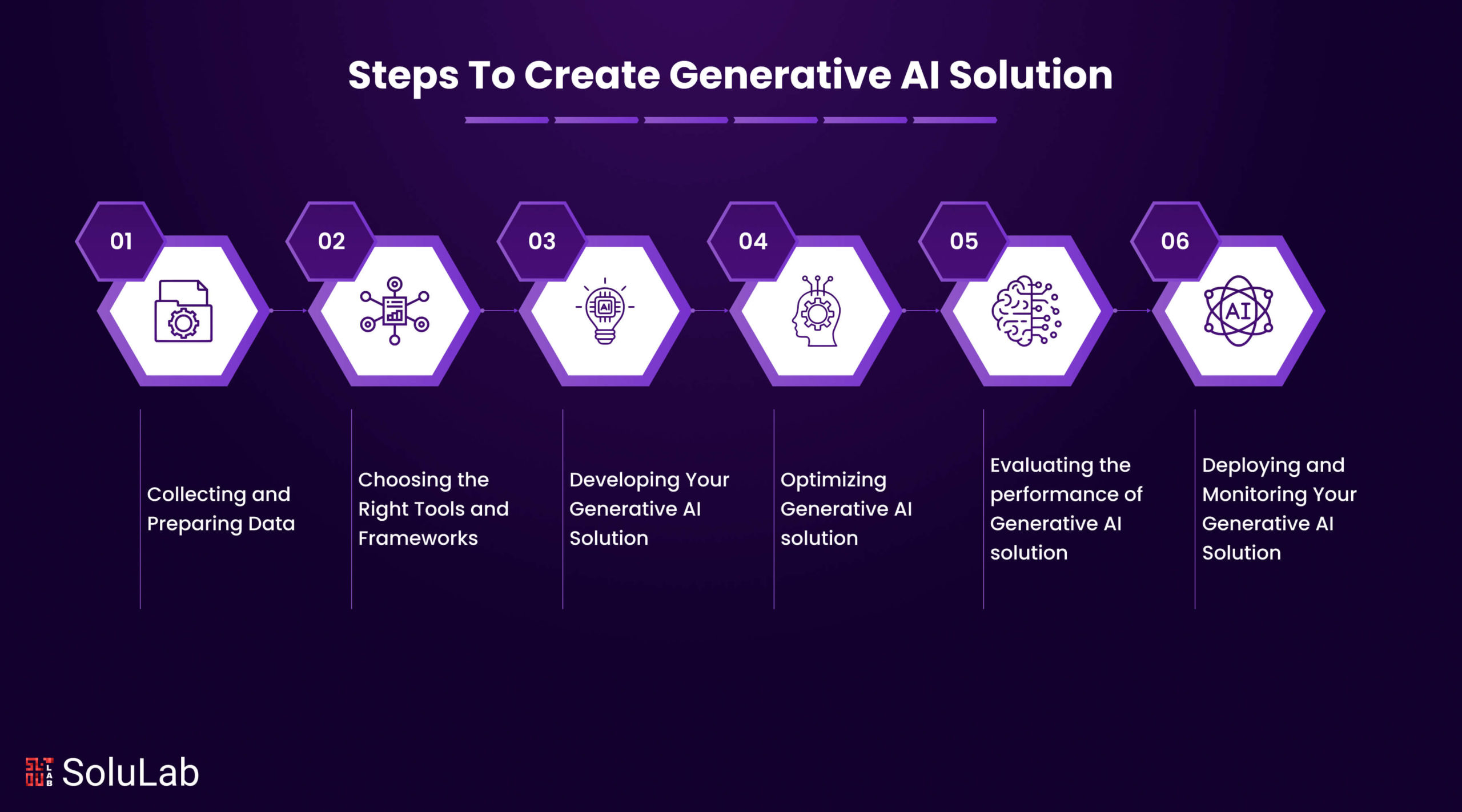
Investors, legislators, and society are discussing Generative AI models like ChatGPT and Stable Diffusion. Many generative AI firms receive large venture capital funding and high valuations. Generative AI can alter sectors and create solutions, making it a critical differentiator for firms trying to innovate. It may be used to create innovative products, marketing campaigns, and simplified workflows.
OpenAI, valued at $25 billion, received more than $1 billion from Microsoft in 2019. This shows that investors are still interested in generative AI startups, for good cause, despite the tech sector’s market collapse and layoffs. By 2031, the market size is expected to reach USD 442.07 billion, reflecting the increasing integration of AI capabilities across industries.
Generative AI can create text, graphics, music, code, video, and audio. Despite its age, transformers and other machine learning techniques have greatly improved generative AI. Thus, in a corporate environment, adopting this technology is crucial to long-term success. This article describes generative AI and how to construct solutions step by step.
Why Build a Generative AI Solution?
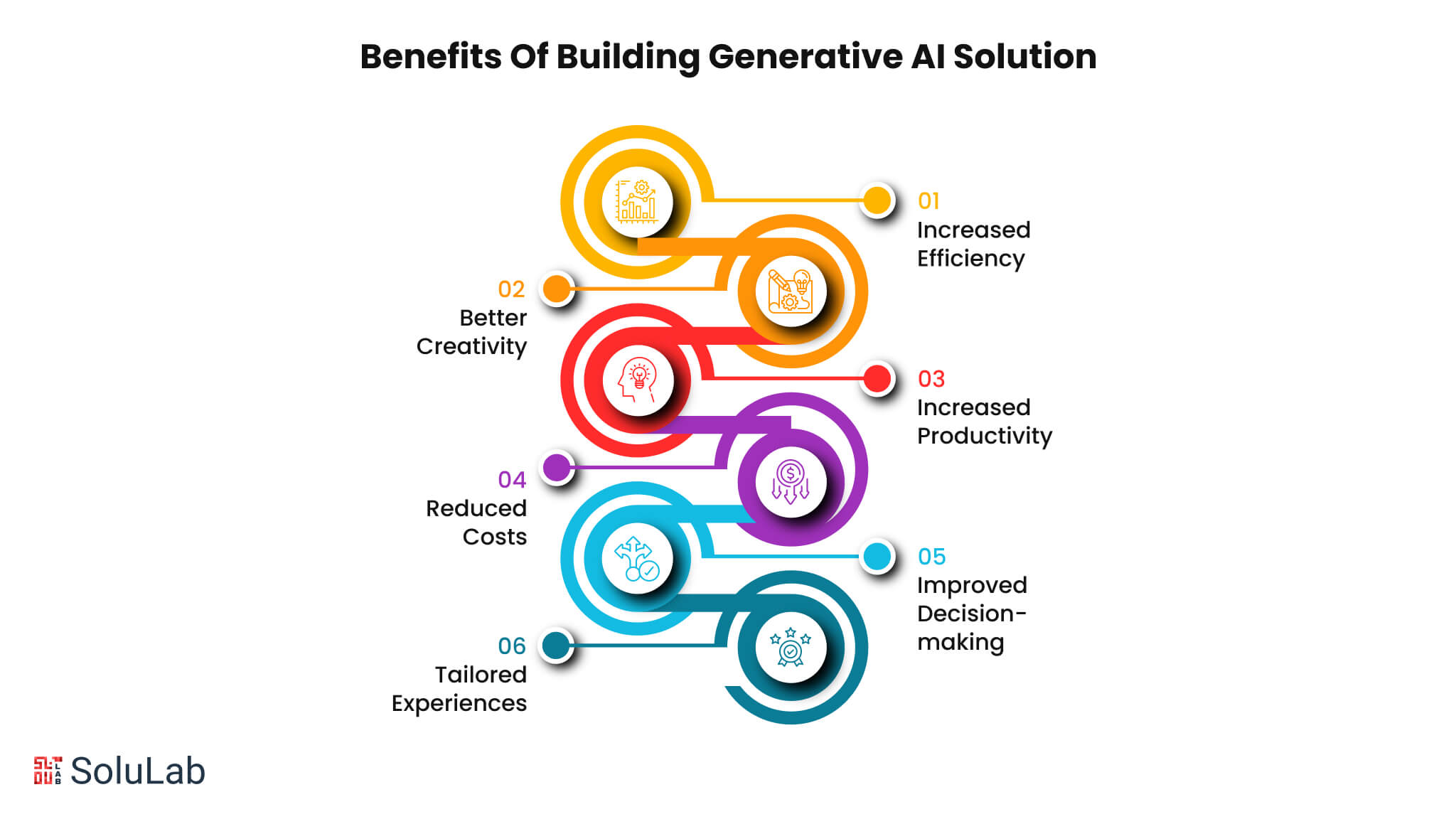
Some potential benefits of developing generative AI solutions involve:
- Increased Efficiency: With generative AI, you may streamline business operations and processes, saving up resources for more productive work.
- Better Creativity: Generative AI may produce unique ideas and ways that humans may not have considered before.
- Increased Productivity: Generative AI automates jobs and processes, allowing firms to boost their productivity and output.
- Reduced Costs: Generative AI has the ability to save organizations money by automating processes that would have to be handled by people.
- Improved Decision-making: Generative AI helps organizations examine massive volumes of data, allowing for better decision-making.
- Tailored Experiences: Generative AI may help organizations provide more tailored experiences to their clients, which improves the entire customer experience.
Applications of Generative AI
Generative AI has the potential to power the next generation of apps and change the way we approach programming, content production, visual arts, and other creative design and engineering jobs. Here are some domains where generative AI has applications:
-
Graphics
With innovative generative AI algorithms, you can convert any regular image into a breathtaking work of art that embodies the distinct style and attributes of your favorite artwork. Whether you begin with a basic doodling or a hand-drawn drawing of a human face, generating graphics algorithms may convert your work into a photorealistic result. Generative graphics may create new patterns, figures, and elements that were not there in the original image, pushing your artistic efforts to new levels of inspiration and ingenuity.
-
Photos
AI can now make your images appear even more alive! AI algorithms are able to identify and replace any missing, obscured, or deceptive visual features in your photographs. Say goodbye to poor shots and welcome to beautifully improved, rectified photos that genuinely capture the soul of your topic. There are other perks that you can obtain. AI technology can also turn low-resolution photographs into high-resolution masterpieces that appear to have been recorded by a professional photographer. That’s not all; AI can also create realistic-looking, synthetic human faces by combining existing portraits or abstracting characteristics of any given image. Perhaps the most fascinating aspect of AI technology is its capacity to produce photorealistic pictures using semantic label maps.
-
Audio
Discover the upcoming wave of AI-driven music and audio technologies with generative AI! You may now turn any computer-generated voice into an individual’s voice that sounds realistic and was recorded in a human vocal tract thanks to the power of AI technology. Additionally, this system has very natural-sounding text-to-speech translation. Generative AI has the ability to bring what you say to life in a way that will genuinely engage your audience, whether you are producing an audiobook, podcast, or any other kind of audio material. These algorithms has the capacity to produce music that has all the passion and emotion of music composed by a human artist.
-
Video
Every filmmaker has a different idea for the movie they want to make, and thanks to generative AI, that idea may now be realized in ways that were not before feasible. Directors may now use it to adjust individual frames in their movies to create whatever kind of style, lighting, or impact they choose. AI video makers can assist filmmakers like never before in realizing their creative vision, whether it is by improving a scene’s inherent beauty or creating a dramatic flare.
-
Text
Utilize the power of generative artificial intelligence (AI) to revolutionize the way you produce content! With the help of generative AI, you can now produce high-quality natural language content quickly and in a variety of ways. AI can develop a multitude of narratives from photographs and other material, from descriptions to annotations, making it simpler than ever to produce interesting and educational content for your audience. By incorporating pre-existing typefaces into new designs, you may elevate your visual content and produce really distinctive and visually arresting designs.
How to Build Your Own Generative AI Solution?
| Category | Tools and Technologies | Reason to Choose |
| Programming Language | Python | Favored for AI and ML projects due to its ease of use and extensive libraries that support advanced functionalities. |
| Deep Learning Framework | TensorFlow, PyTorch | Offer comprehensive tools for creating and training neural networks, recognized for their scalability and adaptability. |
| Generative Model Architectures | GANs (Generative Adversarial Networks), VAEs (Variational Autoencoders) | Vital for developing sophisticated generative models that can produce high-quality outputs. |
| Data Processing | NumPy, Pandas, spaCy, NLTK | Essential for efficient data manipulation and preparation, crucial in readying data for GenAI model development. |
| GPU Acceleration | NVIDIA CUDA, cuDNN | Provide the computational power needed for high-performance training of deep learning models. |
| Cloud Services | AWS, Azure, Google Cloud, IBM Cloud | Offer flexible and scalable infrastructure ideal for deploying and managing GenAI solutions. |
| Model Deployment | TensorFlow Serving, PyTorch, Docker, Kubernetes, Flask, FastAPI | Support the reliable and scalable deployment of AI models into production settings. |
| Web Framework | Flask, FastAPI, Django | Aid in the development of web applications and APIs that integrate seamlessly with GenAI models. |
| Database | MongoDB, PostgreSQL | Provide robust solutions for storing and managing large volumes of both structured and unstructured data. |
| Automated Testing | PyTest | Ensures the reliability of GenAI models by automated testing procedures. |
| Visualization | Matplotlib, Seaborn, Plotly | Facilitate the visualization of data and model outputs, which is crucial for interpreting and analyzing AI results. |
| Experiment Tracking | TensorBoard, MLflow | Offer tools for tracking experiments, visualizing metrics, and managing model versions efficiently. |
| Image Processing | OpenCV, PIL | Essential for handling visual data, particularly for tasks involving image generation and manipulation. |
| Version Control | GitHub, GitLab | Enable effective collaboration, version control, and continuous integration in AI development projects. |
To create a Generative AI solution, it is important to understand how to create your own generative AI model. Creating a generative AI model typically refers to the process of designing and training a machine learning model capable of generating new data or content based on input data. This involves selecting appropriate algorithms, architectures, and training methods to achieve the desired outputs.
On the other hand, developing a generative AI solution involves utilizing one or more generative AI models within a broader context to address a specific problem or achieve a particular goal. This may include integrating the model into existing systems, designing user interfaces, optimizing performance, and deploying the solution in real-world scenarios.
Let us look at the step-by-step guide on how to create Generative AI solution from scratch.
Step 1: Collecting and Preparing Data
Data preparation and gathering are crucial steps in generative AI. The methods used to collect data might change based on the kind of data needed, but they often include acquiring a lot of pertinent information from numerous sources.
Then, this data is prepared by being cleaned, arranged, and cleared of any unnecessary or incorrect information. Once the data is ready, it may be utilized to train the AI model, which will enable it to provide fresh and helpful data.
There are several generative AI models, each with a different strategy for producing content.
-
Generative Adversarial Network (GAN)
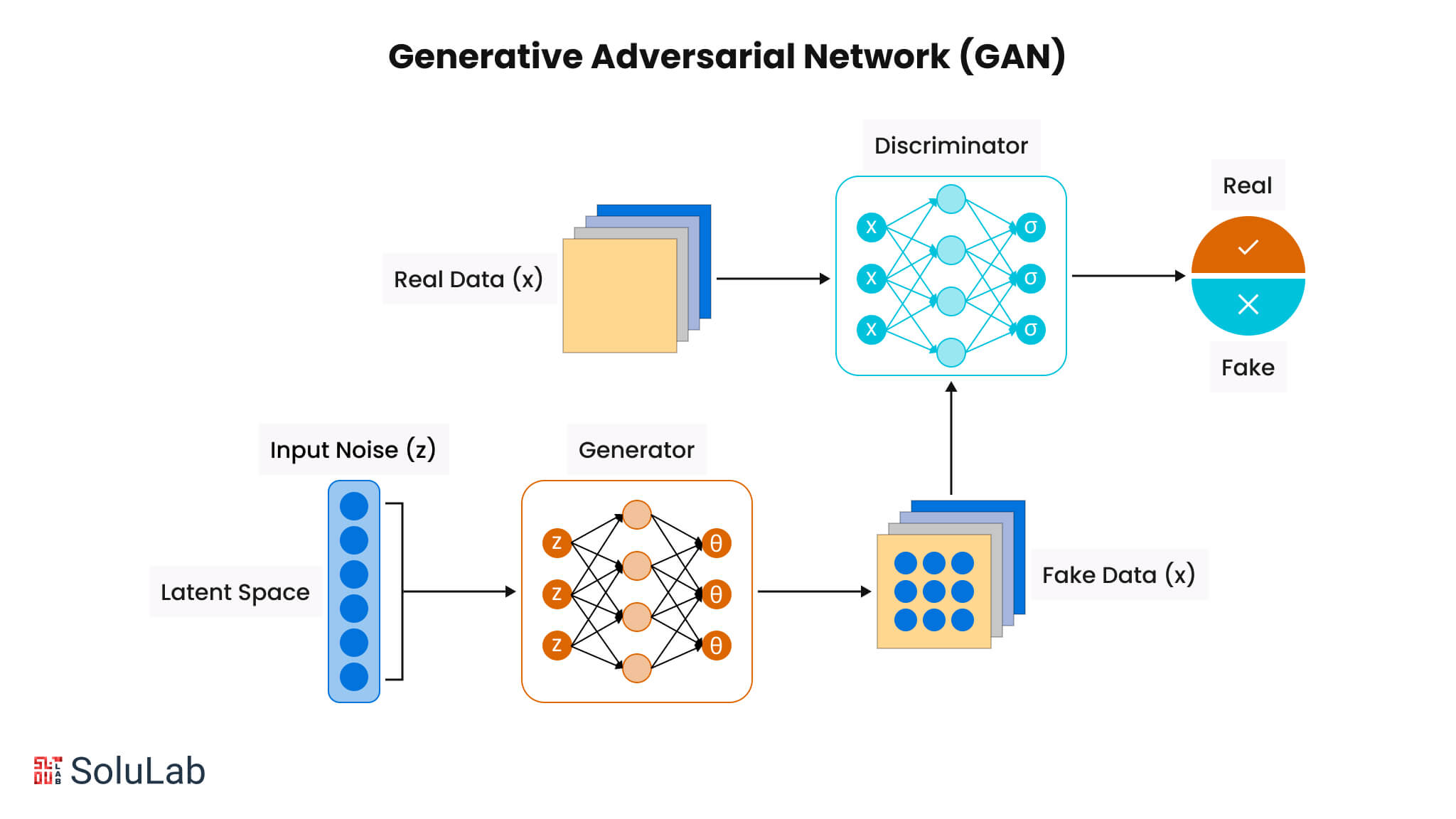
The Generative Adversarial Network (GAN), which combines a generator and a discriminator neural network, is one well-known model. While the discriminator assesses the material for validity, the generator produces fresh content. Together, the two networks aim to gradually raise the caliber of material that is created.
-
Variational Autoencoder (VAE)
The Variational Autoencoder (VAE), a different kind of generative AI model, employs a neural network to encode input into a latent space with fewer dimensions. The model may then produce fresh data by selecting samples from this space and analyzing the outcome. Applications for creating images and videos frequently employ VAEs.
-
Long Short-Term Memory (LSTM)
Long Short-Term Memory (LSTM) networks are another generative AI model particularly useful for generating data sequences, such as text or music. LSTMs are recurrent neural networks that store information from previous time steps using memory cells. This allows them to learn and generate complex sequences of data with a high degree of accuracy.
-
Autoregressive Model
Autoregressive Models are a form of Generative AI that utilizes a conditional probability approach to produce data, with each data point being generated based on the previous ones. This means that the models generate data sequentially, one point at a time, where each new point depends on the previous points. Autoregressive Models have found significant applications in the field of language modeling and have been instrumental in producing realistic texts, including poetry and fiction.
Read Also: Top 25 Generative AI Use Cases
-
Flow-Based Model
Flow-based models are a form of Generative AI that generates data by transforming a basic distribution, such as a Gaussian distribution, into a more sophisticated distribution that aligns with the input data. These models are particularly well-suited for image and video generation and have shown remarkable ability in creating realistic images of faces, landscapes, and even 3D objects.
-
Rule-Based Model
Rule-based models are specific types of models that employ logical rules to represent knowledge and make predictions regarding a particular field. These models have broad applicability and are commonly used in areas such as expert systems, decision support systems, and natural language processing.
For generative AI to succeed, proper data preparation and collection are essential since they make sure the model can produce precise predictions based on the facts at hand.
Step 2: Choosing the Right Tools and Frameworks
As a developer, you may be overwhelmed by the sheer number of AI development tools and frameworks available. Here’s a quick overview of some of the most popular ones:
1. TensorFlow: TensorFlow is an open-source software library for dataflow and differentiable programming across various tasks. It is used for machine learning applications such as neural networks.
2. PyTorch: PyTorch is an open-source machine learning library based on the Torch library. It is used for natural language processing and computer vision.
3. Keras: Keras is a high-level neural network API written in Python capable of running on top of TensorFlow, CNTK, or Theano. It is designed to enable fast experimentation with deep neural networks.
4. Scikit-learn: Scikit-learn is a Python library for machine learning built on top of NumPy and SciPy. It provides tools for data mining and data analysis.
5. Apache Spark MLlib: Apache Spark MLlib is a distributed machine learning framework built on top of Apache Spark. It provides a set of algorithms for classification, regression, clustering, and collaborative filtering.
6. Python: Python is a high-level, interpreted programming language that is widely used for data science and machine learning due to its simplicity, flexibility, and extensive library support.
7. Plotly: Plotly is a library for creating interactive visualizations in Python. It provides a range of tools for creating interactive plots, dashboards, and presentations, as well as a web-based platform for sharing and collaborating on visualizations.
8. Anaconda: Anaconda is a distribution of Python and its associated libraries for data science and machine learning. It includes a range of popular data science libraries, as well as tools for managing and deploying Python environments.
9. Git: Git is a version control system used for collaboration and managing code changes. It provides a range of tools for tracking changes to code, merging code changes from multiple contributors, and deploying code to production environments.
10. Julia: Julia is a dynamic, high-performance programming language for numerical and scientific computing, with a syntax that is easy to read and write.
11. NumPy: NumPy is a Python library for numerical computations with multi-dimensional arrays and matrices, along with an extensive collection of high-level mathematical functions.
12. Pandas: Pandas is a Python library for data manipulation and analysis, offering data structures and tools for the efficient processing and transformation of tabular data.
13. R: R is a popular open-source programming language used for statistical computing and graphics. It provides a wide range of statistical and graphical techniques and has a vast collection of user-contributed packages.
14. OpenCV: OpenCV is an open-source computer vision library that provides a comprehensive set of tools for image and video processing, including object detection, tracking, and recognition.
15. Matplotlib: Matplotlib is a Python plotting library that provides a wide range of visualization tools for creating high-quality 2D and 3D plots and charts.
16. Jupyter Notebook: Jupyter Notebook is an interactive web-based environment for creating and sharing documents that combine code, text, and multimedia content, allowing for easy data exploration and visualization.
These are just a few examples of the many generative AI tools and frameworks available. Each has its strengths and weaknesses, so choosing the right one for your specific project is important.
Here are some key criteria to consider when selecting tools for your Generative AI Development Solution:
- Compatibility with your data sources: Ensure that the tool can handle the complexity of your data and is compatible with your data sources.
- Level of customization and control: Consider the level of customization and control the tool allows as this can greatly impact the accuracy and relevance of your generated content.
- Transparency and interpretability: Look for tools that offer transparency and interpretability, allowing you to understand how the AI makes its decisions and adjusts accordingly.
- Scalability and cost-effectiveness: Finally, consider the scalability and cost-effectiveness of the tool, as you may need to expand or adjust your solution in the future.
By carefully considering these criteria, you can select the right tools to help you achieve your generative AI goals.
Step 3: Developing Your Generative AI Solution
There are numerous critical processes involved in creating a generative AI solution. First and foremost, it’s crucial to specify the issue you want your AI solution to address. This will make it easier for you to comprehend the data you need to gather, the model you should use, and how to train it.
After defining the issue, you may select a generative model that can replicate the patterns in your data and produce fresh results. There are various generative models, each having advantages and disadvantages, including GANs, VAEs, and autoencoders. You can select the model that best matches your issue.
When you get good findings, you may start using data to train the model and fine-tune its parameters. This process can take some time, so it’s important to be patient and persistent. Once you have a trained generative model, you can use it to generate new data that can be used for various applications such as content creation, image generation, or even drug discovery.
Step 4: Optimizing Generative AI solution
There are a few crucial guidelines to remember while using generative AI in order to optimize your solution. Hyperparameter tweaking is a crucial factor. To acquire the greatest outcomes, you must tweak your model’s parameters. By experimenting with various variables, you may improve your AI’s ability to provide outputs that are more accurate and valuable.
Regularization is a crucial consideration as well. To avoid overfitting and enhance your model’s capacity to generalize to new data, you must apply restrictions to it. You may make sure that your AI can deliver trustworthy and consistent results by utilizing approaches like dropout or L1/L2 regularization.
It takes close attention to detail, a willingness to experiment, and the flexibility to make adjustments as necessary to optimize your generative AI solution. By following these tips and staying up-to-date on the latest developments in the field, you can stay ahead of the curve and maximize the potential of your AI-powered assistant.
Step 5: Evaluating the performance of the Generative AI solution
There are a few important methods you may employ to gauge how well your generative AI system is working. Analyzing the output quality produced by the system is one of the most crucial steps. To assess how effectively the system can produce relevant and valuable material, accuracy, coherence, and relevance criteria can be used.
A crucial method is to assess the system’s capacity for feedback-based learning. This may be achieved by offering feedback on the system’s output and then seeing how well it is able to incorporate that feedback into subsequent generations. This may make sure that the system is continually enhanced and tailored to the requirements of its users.
Finally, it is important to consider the system’s scalability and efficiency. This can be done by monitoring how well the system performs when generating large volumes of content and how quickly it can generate that content. This can help ensure that the system can handle the demands of a large user base and that it can generate content quickly and efficiently.
By using these techniques, you can ensure that your generative AI solution is performing at its best and can provide the high-quality content that your users expect.
Step 6: Deploying and Monitoring Your Generative AI Solution
- Integrating: One deployment option is integrating the generative AI solution into existing software or applications through APIs or SDKs provided by the solution provider.
- Hosting: Hosting the AI solution on cloud platforms like Amazon Web Services, Microsoft Azure, or Google Cloud Platform allows for scalability and easy accessibility from anywhere.
- Deploying: Deploying the AI solution on-premise by installing it on your own servers or hardware provides greater control and security over data.
Ultimately, the best deployment option will depend on your specific use case and needs. It’s important to consider each approach’s pros and cons carefully and choose the option that best aligns with your goals and objectives. Whether you opt for cloud platforms, edge devices, or both, deploying your generative AI solution can help you unlock new insights, drive innovation, and achieve better outcomes.
Read Also: Top Generative AI Development Companies
Best Practices to Create Own Generative AI Solution
Developing generative AI solutions is a multifaceted endeavor demanding meticulous planning, execution, and monitoring to guarantee favorable outcomes. Adhering to best practices heightens the likelihood of success, ensuring your generative AI creation aligns with intended objectives. Here are some key practices to create your own Generative AI solution:
- Establish Clear Goals: Precisely articulate the problem and objectives of your generative AI venture to steer development toward desired outcomes.
- Curate High-Quality Data: Supply your model with top-tier, pertinent data for effective training, ensuring meticulous cleaning and preprocessing to maintain quality.
- Select Suitable Algorithms: Experiment with diverse algorithms to pinpoint the optimal choice that aligns with your problem domain.
- Forge Robust Architecture: Construct a resilient and scalable infrastructure utilizing distributed computing, load balancing, and caching to manage increased demand.
- Enhance Performance: Employ techniques like caching and asynchronous processing to bolster efficiency and velocity.
- Monitor Effectiveness: Continuously monitor performance to swiftly identify and rectify issues, utilizing profiling tools and metrics tracking.
- Uphold Security and Privacy: Safeguard user data through encryption, access control, and anonymization techniques.
- Rigorous Testing: Rigorously test your solution across varied scenarios to ensure it meets stringent quality standards.
- Document Development: Thoroughly document the development process, including code, data, and experiments, to enable reproducibility and transparency.
- Continuous Improvement: Iteratively refine your solution by integrating user feedback, monitoring performance, and incorporating new functionalities.
Following these guidelines will empower you to create generative AI solution, driven for success in diverse AI applications.
How Building Generative AI Solutions Impacts Different Industries?
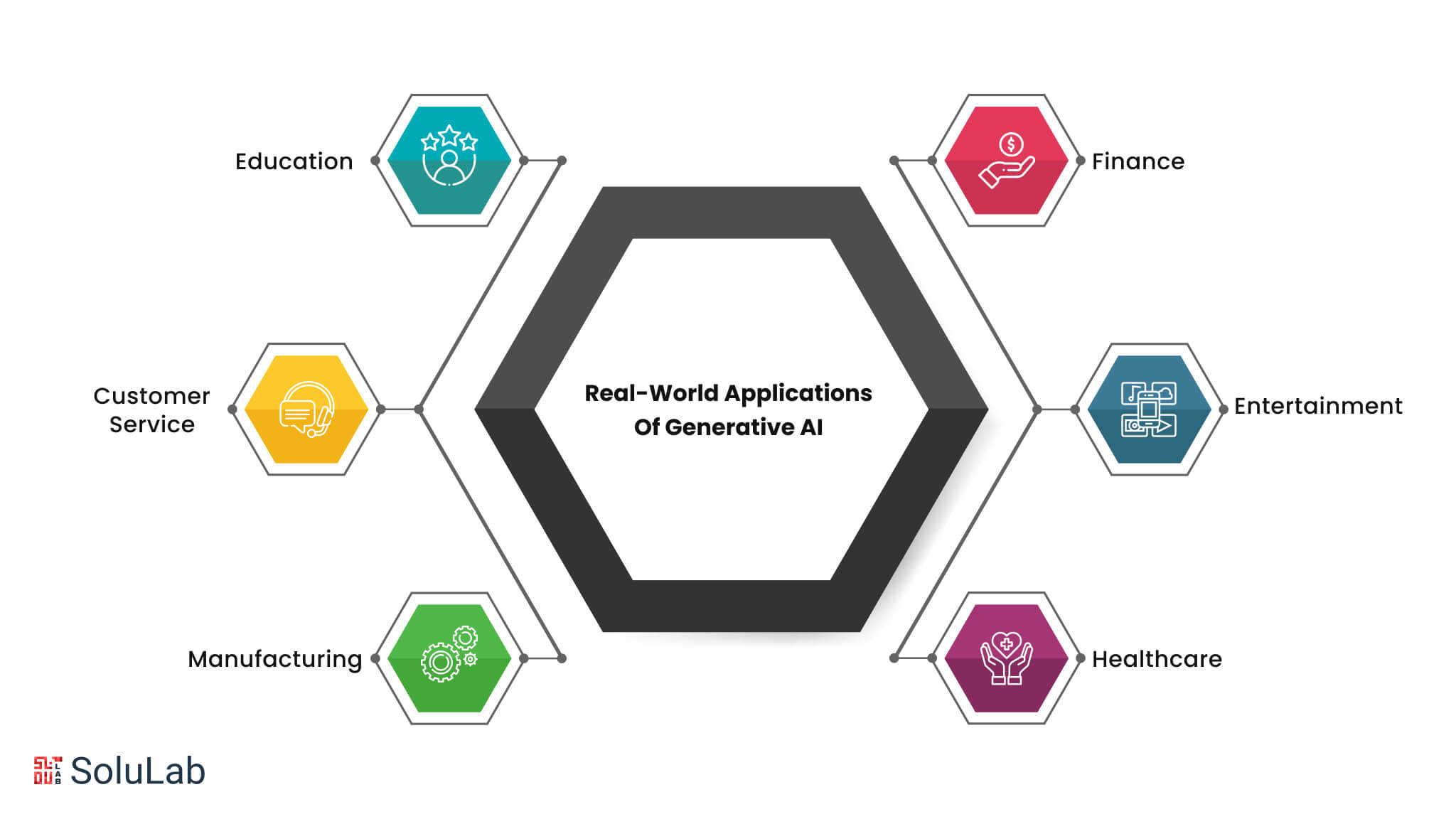
There have been some impressive examples of generative AI solutions in various industries that have been successful. In healthcare, AI-powered assistants have been developed to help doctors and nurses with triage, diagnosis, and treatment planning tasks. These assistants have been proven to be very effective at helping healthcare professionals make better decisions and improve patient outcomes.
1. Finance
AI-powered systems have been developed to help banks and financial institutions with fraud detection, risk management, and trading tasks. These systems effectively reduce the risk of fraud and improve the accuracy of financial predictions.
Related: AI in Finance
2. Entertainment
Generative AI has been used to create new types of content, such as music, art, and literature. These solutions have been used to create new genres of music and art that would have been impossible to create using traditional methods.
3. Healthcare
Generative AI in the healthcare industry has significant potential by analyzing medical data to generate personalized treatment plans for patients. It can also contribute to drug discovery and development and aid in the creation of prosthetic devices and implants. The ability to process large amounts of data with speed and precision can revolutionize the healthcare industry.
4. Manufacturing
Generative AI has promising applications in enhancing the manufacturing process. By scrutinizing data on product design and production, it can develop novel designs, fine-tune manufacturing processes, and minimize waste. It can also forecast maintenance requirements and recognize potential issues before they arise, thereby enhancing productivity and diminishing expenses.
Read Also:Generative AI in the Manufacturing
5. Customer Service
Generative AI can augment customer service by examining customer data and generating personalized responses and recommendations, thereby enhancing the customer experience. It can also facilitate the development of AI-powered chatbots and virtual assistants, providing customers with prompt and efficient service.
6. Education
Generative AI has the potential to enhance the education industry by generating customized learning plans for students, assessing their performance, and recommending areas for improvement. It can also produce educational content, such as interactive textbooks and online courses, to make learning more accessible and captivating.
Overall, many examples of successful generative AI solutions exist in various industries. These solutions effectively improve efficiency, reduce costs, and improve outcomes.
Conclusion
Artificial intelligence has the potential to transform various industries and societies. In healthcare, it can help identify cures for diseases. In entertainment, it can create immersive experiences. In finance, it can identify patterns for better investment decisions. However, ethical concerns about its impact on employment and privacy must be considered as it advances.
Your firm may gain a lot from working with a Generative AI development company, including customized solutions, increased productivity, and proactive issue detection. They can assist you in streamlining processes, improving customer experience, and staying one step ahead of the competition with their knowledge and cutting-edge technology.
SoluLab offers top-tier generative AI solutions that encompass consultation, planning, design, development, and system architecture for unparalleled support. The team is committed to elevating your operations and amplifying the customer experience. Contact them for a complimentary consultation now!
FAQs
1. Can I build my own Generative AI?
With the appropriate resources, anyone may create their own AI model. You can experiment with data analysts and different data professionals regardless of whether they are merely interested in learning the fundamentals of AI.
2. What is the role of a Generative AI app builder?
Without extensive AI knowledge, a generative AI app builder enables the creation, quick experimentation, and implementation of generative AI applications.
3. How to create an AI from scratch?
To build an AI from scratch you will need to follow a pattern of Specifying the goal, gathering and Preparing the data, Choosing models and algorithms, developing your model, adjusting and refining the model, installing the model, and lastly keep monitoring.
4. Is OpenAI different from Generative AI?
OpenAI exemplifies how generative AI technologies may be refined and personalized for certain tasks, even if the field encompasses various systems and applications.
5. How can SoluLab help with the challenges involved in building Generative AI?
With the implementation of Natural Language Processing SoluLab can help with the challenges involved in the creation of generative AI this as a result will also improve the quality of customer experiences and boost engagement.
6. Can I generate code using Generative AI models?
Generative AI models like ChatGPT, GitHub Copilot, and Code Llama can generate code for various programming languages, automate tasks, and assist in debugging, improving developer productivity.




